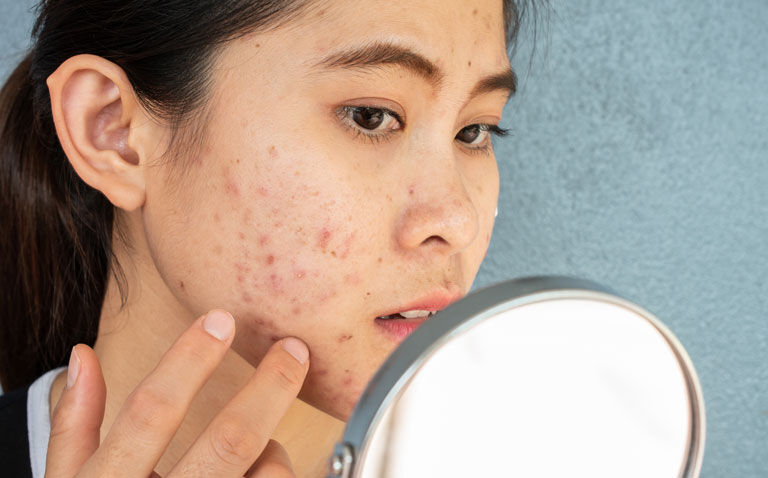Use of a ceramide-containing cleanser and lotion significantly reduces the localised adverse effects of a retinoid-benzoyl peroxide gel used to treat acne, according to a recent randomised, placebo-controlled trial.
It was suggested in 1995 that an impaired water barrier function in the skin due to reduced amounts of ceramides may be responsible for the formation of acne lesions. Topical retinoids combined with benzoyl peroxide represent an effective treatment regime for acne. However, the combination is association with localised adverse effects characterised by burning, itching, tightness and dryness. Some evidence suggests that changes to the composition of the vehicle for acne medications, enhances tolerability.
Since a more tolerable vehicle might reduce skin irritation and possibly enhance treatment adherence, in the current study published in the Journal of Drugs in Dermatology, researchers performed a double-blind study was to measure the impact of acne treatment on skin barrier function when paired with a ceramide routine.
Participants using an adapalene and benzoyl peroxide (A/BPO) gel for the treatment of their acne, were recruited and randomised to an intervention or placebo group. The intervention group received a ceramide-containing foaming facial cleanser and facial lotion whereas the placebo group received basic foaming face wash, both of which were for twice-daily use. Participants applied the A/BPO gel once daily and self-reported measures of skin irritation. Both transepidermal water loss (TEWL) and the efficacy of A/BPO were also assessed.
Ceramide containing routine and skin irritation
A total of 91 participants completed the study, of whom 45 were in the ceramide arm.
Among those using the ceramide routine, TEWL was significantly lower after four weeks of treatment and remained so for all 12 weeks of the study (p < 0.05). Measures of skin dryness and scaling were significantly improved in the ceramide group after one week (p < 0.05), whereas erythema was only significantly improved at week four. Overall, a higher proportion of the intervention group reported having less skin dryness, tightness and that their skin felt more comfortable throughout the duration of the study.
The total mean count of inflammatory lesions was significantly lower after four weeks in the intervention group and this was maintained thereafter until week 12 (p < 0.05). However, there were no significant differences in the mean non-inflammatory lesion counts.
The authors concluded that while a topical A/BPO gel caused damage to the skin barrier, the associated symptoms such as irritation could be significantly reduced through the use of a ceramide routine.










